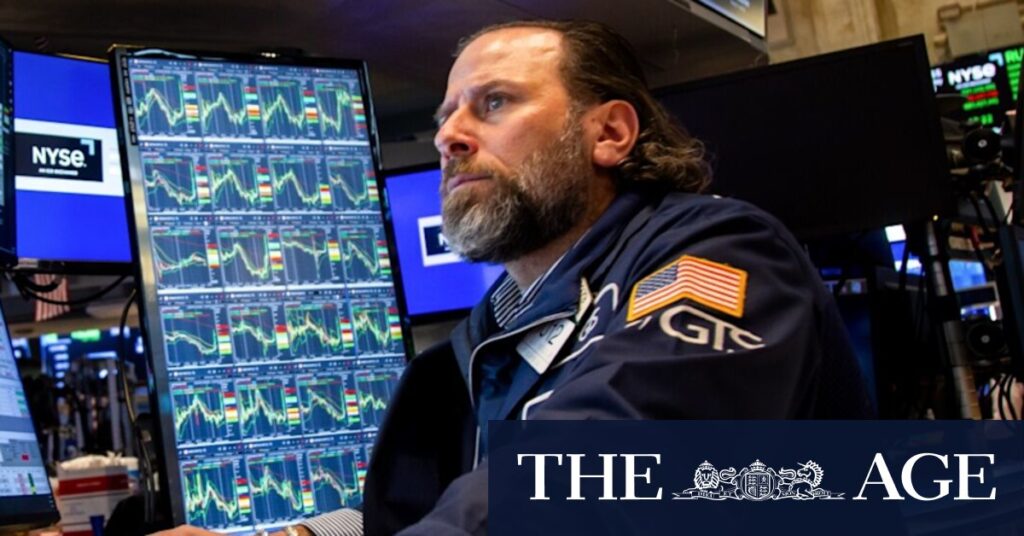
The Australian sharemarket experienced a significant downturn on Wednesday as an unexpected rise in inflation dashed hopes for a potential interest rate cut by the Reserve Bank of Australia (RBA) during its upcoming meeting. The S&P/ASX 200 index closed down by 86.30 points, or 1 percent, at 8926.20. This decline was primarily driven by financial stocks and companies reliant on discretionary consumer spending. The Australian dollar, meanwhile, saw a slight increase of 0.2 percent to US65.98¢.
The inflation figures, which were released by the Australian Bureau of Statistics, revealed that headline inflation rose to 1.3 percent in the three months leading up to September, a significant increase from the previous quarter’s 0.7 percent. This brought the annual rate of price growth from 2.1 percent to 3.2 percent. According to Diana Mousina, deputy chief economist at AMP, these figures are “too high for the RBA to be comfortable to cut the cash rate next week”.
Market Reactions and Economic Implications
The unexpected inflation data had immediate repercussions in the financial markets. Bond yields surged by 12 basis points to 3.57 percent, marking the largest increase since January. The Australian dollar’s rise reflected traders’ diminishing expectations of a rate cut, which had been estimated at a 40 percent likelihood before the data release.
Several economists have interpreted the inflation surge as a likely end to the RBA’s easing cycle. Su-Lin Ong, chief economist at Royal Bank of Canada, stated, “The RBA easing cycle is likely over,” a sentiment echoed by Belinda Allen of the Commonwealth Bank, who noted the “broad-based nature of pricing pressures” in the data. Other financial institutions, including Bank of America Securities and JPMorgan Chase, also anticipate a halt in rate cuts.
Sectoral Impact: Banks and Retail
The banking sector bore the brunt of the market’s negative reaction. Commonwealth Bank of Australia, the country’s largest stock, fell by 2.1 percent, while National Australia Bank, Westpac, and ANZ Bank experienced declines of 2.6 percent, 3.4 percent, and 0.4 percent, respectively. Macquarie Group, often referred to as the “Millionaires’ Factory,” also saw a decrease of 1.4 percent.
Retailers were not spared either, with Wesfarmers, JB Hi-Fi, and Qantas among those affected. Wesfarmers, which owns Kmart, Officeworks, and Bunnings, dropped 1.7 percent, while JB Hi-Fi and Qantas lost 1.3 percent and 3.2 percent, respectively. Shopping center owners such as Scentre, Stockland, and Vicinity also saw their stocks decline.
Woolworths Defies the Trend
In contrast to the broader market downturn, Woolworths shares rose by 2.4 percent despite reporting weaker-than-expected sales figures for the September quarter. CEO Amanda Bardwell acknowledged that the company’s performance “was below our aspirations,” with food sales at its supermarkets increasing by only 2.2 percent, falling short of analyst forecasts.
“There appear to be some (very early) green shoots,” noted Jarden analyst Ben Gilbert, highlighting Woolworths’ October food sales growth of 3.2 percent.
The company’s upcoming annual general meeting, coinciding with rival Coles’ quarterly sales report, will be closely watched by investors. Coles, which has been gaining market share, saw its shares fall by 1.9 percent.
Technology and Biotech Sectors
Technology stocks also faced declines, with Xero, Technology One, and NextDC dropping 2 percent, 3.6 percent, and 1.9 percent, respectively. WiseTech Global, which recently lost its status as the largest tech firm due to a significant share price drop, rebounded slightly with a 1 percent increase.
Biotech giant CSL continued its downward trajectory, losing an additional 4 percent following a 15.9 percent drop on Tuesday. The company issued a profit warning for its Seqirus vaccine business due to a decline in influenza vaccinations in the US, a key market.
Mining Sector and Global Market Trends
Mining companies provided a rare bright spot, with BHP, Fortescue, and Rio Tinto advancing by 1.3 percent, 1 percent, and 0.5 percent, respectively. Gold miners such as Northern Star and Evolution Mining saw gains of 2.4 percent each, while Newmont rose by 1.1 percent as gold prices steadied.
On Wall Street, the S&P 500, Dow Jones, and Nasdaq all reached record highs for the third consecutive day. Investors are keenly awaiting the Federal Reserve’s latest rate decision, as well as key earnings reports from major tech companies. Apple and Microsoft both saw gains, with Microsoft joining Nvidia as one of the few companies valued at $US4 trillion.
Amazon’s announcement of job cuts, aimed at reallocating resources towards artificial intelligence, led to a 1 percent rise in its stock. Meanwhile, United Parcel Service’s strong quarterly results boosted its shares by 8 percent, while Royal Caribbean faced an 8.5 percent drop despite surpassing profit expectations.
The Federal Reserve is expected to announce another rate cut, with the possibility of a third cut later in the year, as it navigates a slowing job market and ongoing inflation concerns.







